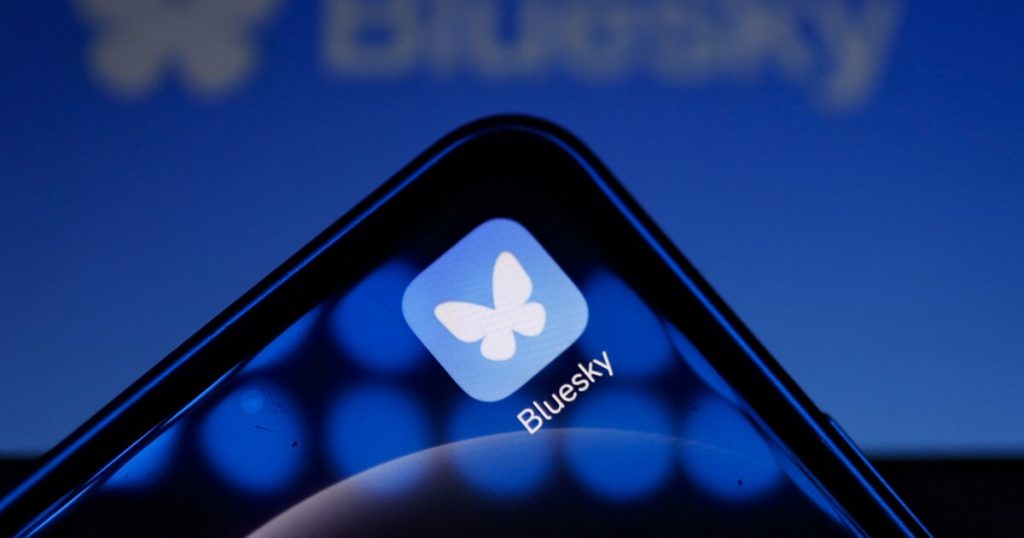Bluesky hasn’t gained enough users yet for banks to engage on the Twitter-like social media startup, but as its traffic picks up it may hold some appeal for banks yearning for the initial days of Twitter.
As of now, there are very few banks on Bluesky, and most that are on the platform have only reserved a handle or a profile without publishing any content, says Ben Pankonin, chief executive officer of Social Assurance, developer of social media content software for banks.
“There’s not quite enough content and active users that it’s really attracting banks,” Pankonin says. “There’s also not really advertising opportunities there yet.”
Bluesky, originally created as a research project by Twitter founder Jack Dorsey, launched in February 2023, but was restricted to invitation-only users for about a year. However, its recent growth spurt created a lot of buzz with the public, boosted by two tipping points that drove a migration from X, says Casey Fiesler, a University of Colorado Boulder professor who studies online communities. Those were the November election and X’s new requirements for user data to be employed for AI training.
At the same time, there’s been an exodus of companies from X, including banks. “There are a lot of financial brands that are both struggling with the use case for X because the traffic has declined, but also they may be concerned now that pornography, for instance, is openly published on X,” Pankonin says.
Bluesky’s popularity as an X alternative is also helped by the fact that it’s easier for new users to get started on than Mastodon, another X alternative startup, and it is perceived as less corporate than Threads, the Meta-owned X alternative, Fiesler says. Various sources put Bluesky’s monthly users at 20 million to 26 million, compared to 600 million plus for X, 275 million for Threads and 9 million for Mastodon.
Fiesler predicts that Bluesky will continue to grow, but will never reach the scale of the original Twitter because the social media landscape will remain fragmented as communities land on the platforms that best cater to their preferences.
What is available to banks on Bluesky is the “first mover” advantage, like the opportunity that presented itself to content posters in the early days of Twitter, Pankonin says.
Because Bluesky is less dependent on algorithms feeding content to its users, it favors banks that are proficient at posting organic content, as opposed to more formal advertising, he says. That’s created an environment for users that’s like the original Twitter: Bluesky users can choose a “discover” algorithm feed that selects content based on what the user reads or follows, or a “following” feed based solely on the user’s follows.
“If that feels like a place that you kind of win at, then you can win on Bluesky. You’re not determined on an algorithm that you’re hoping to win on. If it’s really good organic content, you’re getting shares,” Pankonin says.
As traffic picks up on Bluesky, it should appeal to banks and other financial brands that want to be perceived as leaders or innovators, he says. Those that can gain an early following on the platform from organic content could establish that first-mover advantage. “There’s not a lot of noise there yet,” Pankonin says.
For banks that are more dependent on paid advertising on social media platforms, Bluesky’s current lack of emphasis on algorithmically driven feeds is less appealing. “That’s one of the reasons why the platforms themselves want to introduce algorithms: They want to favor content that they’re getting paid for. That’s why Meta is trading at $600 plus per share,” Pankonin says.
One of the first questions for banks considering a new social media platform should be whether it’s worth spending the time and energy to publish there and create content specific to the site and its subculture, he says.
A bank also needs to evaluate whether the reputation, audience and type of content on the platform aligns with the bank’s interests, he says. “Is this just the progressive crowd who’s looking for the next innovative feature, or are they having conversations that could lend themselves to describing and talking about financial services in any substantial way?”
“Part of the history of X, and Twitter, was being able to have those connections with those thought leaders, journalists, those people who were really active, and that can be a really good way to make sure you’re being covered as well,” Pankonin says.
